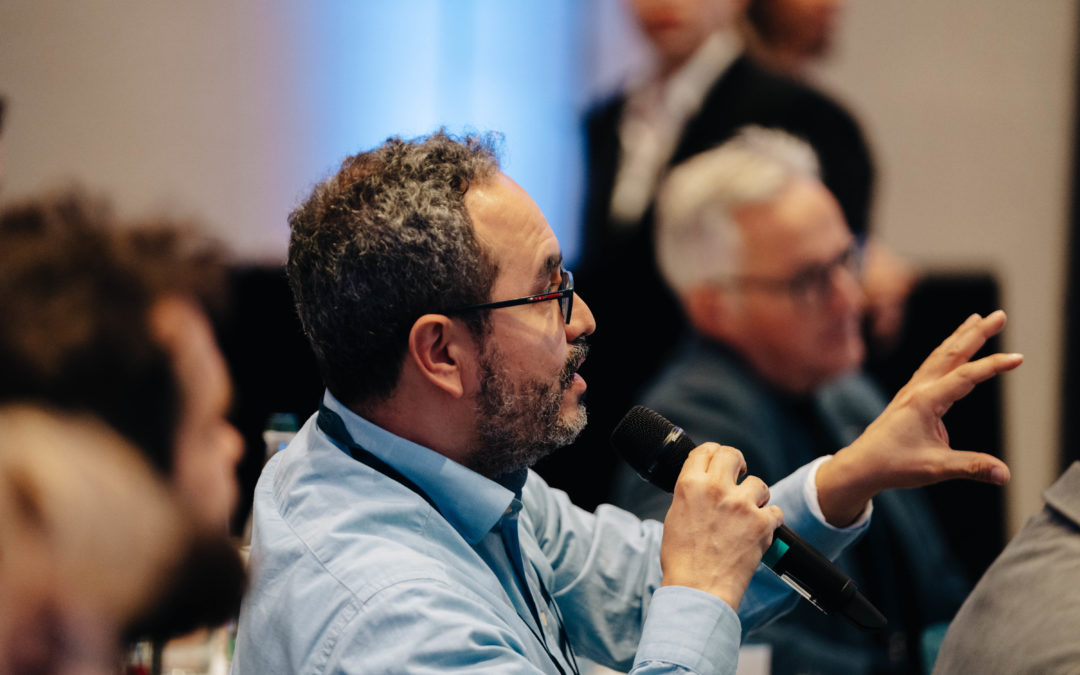In last month’s post, I shared some tips and techniques on the art of handling audience questions – whether you’re online, in-person, or in front of a tough crowd.
Now let’s take things a step further. What happens when the question is messy, hostile, or downright confusing? How do you respond when you’re caught off guard—or worse, when no one asks anything at all?
Below are some tips and techniques:
• Reframe convoluted questions: If a question is overly long, vague, or hard to follow, help your audience by tightening it up.
“I am sorry I can’t quite grasp every detail of your question, but I would like to respond to your part about X”
• Be clear when you don’t know the answer: You can’t have all the answers. Here are three options on what to say when you don’t have the answer:
i. Say ‘I don’t know’ – you’ll get back to them. Never, ever, guess.
ii. Ask someone in the audience to respond who is an expert on the subject.
iii. ‘I’m not 100% sure’ When you say this you’re not saying ‘I don’t know’, you’re saying ‘I’m not completely sure’, which is a totally different thing.
• Answering challenging questions: When faced with a challenging question from that angry staff member, board member or at an official hearing – you need to employ the ABC technique I teach in media training – acknowledge the question, potentially reframing it before you bridge to a broader point you want to make – moving from the specific to the general.
• Group multiple questions by theme: One client of mine has to answer up to twenty different questions, including sub-questions on at least five different topics or different aspects of one topic every time she appears in front of a parliamentary hearing in less than five minutes!
She groups the questions under themes and then answers any miscellaneous questions. She even manages to acknowledge some of the MEPs by name. This takes practice and skill.
• Answer questions individually if possible: It is much easier for you to answer questions one by one as you won’t forget them, and it helps the audience too, who can lose track if you answer multiple questions in one go.
• Have a process for taking online questions: When I moderate online press briefings or panel discussions, I also group the questions that flood in from journalists thematically. However, I signpost clearly which question is for which speaker and ask them one by one.
I also like to have a google doc where the event producer can copy and paste the questions as they come in on the chat. They can tweak the English and prioritize the question, even suggesting which question goes to which speaker. This makes it easy for me to group by theme, and ensure that each speaker gets at least one question.
What happens if you don’t get any questions?
It happens. Avoid the temptation to fill the silence. Wait. Some people are nervous about asking questions in public.
Alternatively, ask a question yourself – “A question I’m often asked is…” or “Before I began, someone asked me…”
You can also have someone lined up to ask the first question, or you can ask people to turn to their neighbor to reflect on what the presenter has said and see if they have any questions. As a moderator, I used this technique once, and it worked a treat!
Remember, Q&A isn’t a test – it’s a conversation. Whether you’re dealing with a chatty audience, a sceptical stakeholder, or radio silence, these strategies can help you keep the dialogue meaningful, honest, and engaging.
Claire Doole is a former BBC journalist, UN, IFRC and WWF International spokeswoman who has for more than twenty years trained and coached executives in the art of answering tough questions from the media, employees or the public. You can find out more at www.doolecommunications.com

